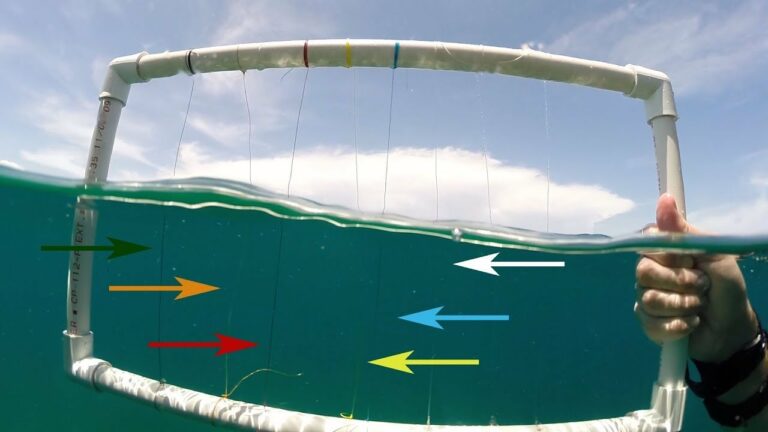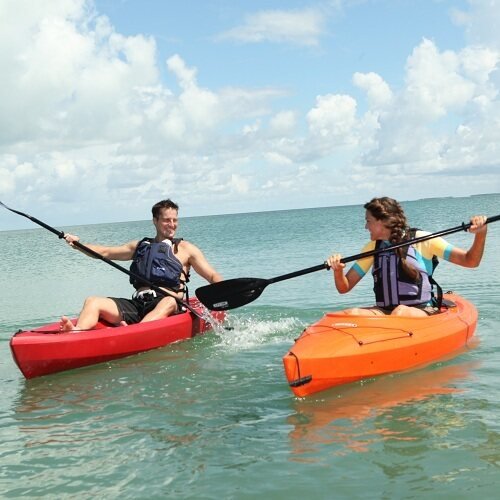How Weather Conditions Impact Crappie Fishing (Full Guide)
Today we discuss How Weather Conditions Impact Crappie Fishing. In this comprehensive guide, we will explore the fascinating relationship between weather conditions and crappie fishing.
Whether you’re a seasoned angler or a beginner, understanding how weather factors can affect crappie behavior and feeding patterns is crucial to increasing your chances of success on the water.
From temperature and barometric pressure to wind and cloud cover, we will delve into each element and provide practical tips and techniques to optimize your crappie fishing experience.
How Weather Conditions Impact Crappie Fishing:
The Impact of Temperature
Temperature plays a crucial role in determining where crappie will be located and how actively they will feed. As a general rule, crappie are more active and willing to bite when water temperatures are within their preferred range of 60-80°F (15-27°C).
During the spring, when water temperatures start to rise, crappie become more active and move closer to the shorelines to spawn. This is an excellent time to target them using various techniques such as casting jigs or live bait near submerged structures.
In the summer months, when water temperatures reach their peak, crappie tend to move deeper into cooler waters. Look for them near drop-offs, submerged brush piles, or other structures that provide shade and relief from the heat. Vertical jigging or trolling with crankbaits can be effective strategies during this time.
As fall approaches and water temperatures begin to cool down again, crappie become more active and start moving back towards shallower areas. They will feed aggressively in preparation for the winter months. Casting or trolling with small crankbaits or minnow imitations can yield excellent results during this period.
During winter, when water temperatures drop below 50°F (10°C), crappie become less active and tend to move to deeper areas where the water is warmer. Slow presentations such as vertical jigging or using live minnows near brush piles or drop-offs can be effective in enticing sluggish crappie to bite.
Understanding Barometric Pressure
Barometric pressure, also known as atmospheric pressure, refers to the weight of the air pressing down on the Earth’s surface. It has a significant influence on fish behavior, including crappie. Changes in barometric pressure can indicate impending weather fronts, which can affect crappie feeding patterns.
When barometric pressure is high (stable weather conditions), crappie tend to be more sluggish and less willing to bite. They may move to deeper waters or become more inactive near the bottom. During these times, anglers may need to adjust their techniques by slowing down presentations or offering smaller baits.
Conversely, when barometric pressure is low (unstable weather conditions), crappie become more active and tend to feed more aggressively. They may move towards shallower areas or suspend in the water column. This is an ideal time to target crappie using a variety of techniques like casting jigs or using live bait under bobbers.
Monitoring changes in barometric pressure before and during your fishing trip can provide valuable insights into crappie behavior. Utilize online weather forecasts or invest in a barometer to track these fluctuations and increase your chances of success on the water.
The Role of Wind:
Wind is another crucial factor that affects crappie fishing. Wind can impact various aspects of fishing, including water movement, temperature distribution, and baitfish behavior – all of which ultimately influence crappie activity.
A light breeze or gentle wind can create ripples on the water’s surface, which can help break up the visibility and make crappie feel more comfortable venturing into shallower areas. This provides an opportunity for anglers to target them near shorelines or shallow structures using techniques like casting jigs or using live bait under bobbers.
On windy days, pay attention to the direction of the wind as it can dictate where the crappie will be positioned. Wind blowing towards shorelines can push warmer surface waters along with baitfish, attracting crappie to feed in these areas. Conversely, wind blowing away from shorelines may concentrate crappie in deeper waters or on the downwind side of structures.
However, it’s important to note that excessively strong winds can make boat control difficult and create unsafe fishing conditions. Exercise caution when fishing in windy conditions and prioritize your safety above all else.
The Influence of Cloud Cover:
Cloud cover refers to the amount of cloudiness in the sky during a fishing outing. It can have a significant impact on crappie behavior and their willingness to bite.
On bright, sunny days with clear skies, crappie tend to seek shelter in deeper waters or under submerged structures to avoid direct sunlight. During these conditions, it may be necessary to fish deeper or target shaded areas such as brush piles or fallen trees.
Conversely, when the sky is overcast or there is moderate cloud cover, crappie feel more comfortable venturing into shallower areas to feed. This presents an excellent opportunity for anglers to target them near shorelines or other shallow structures using various techniques like casting jigs or trolling with small crankbaits.
If you encounter changing cloud cover throughout your fishing trip, pay attention to how it affects crappie activity. Adjust your presentation accordingly by either going deeper or shallower based on their response.
Additional Factors to Consider
While temperature, barometric pressure, wind, and cloud cover are some of the primary weather factors that impact crappie fishing, other considerations can further enhance your chances of success:
Water Clarity:
Water clarity plays a vital role in how visible your bait appears to crappie. In clear water conditions, it may be necessary to use lighter lines and more natural-looking baits to entice bites. In murky water, consider using brighter-colored baits or those with added vibration or scent to attract attention.
Rainfall:
After a period of rainfall, runoff can introduce fresh nutrients into the water system, which can stimulate feeding activity among crappie. Target areas near inflows or areas where runoff creates current breaks or eddies for increased chances of success.
Moon Phase:
While not directly related to weather conditions, the moon phase can influence fish behavior as well. During periods of a full moon or new moon, crappie may be more active at night and less active during daylight hours. Adjust your fishing schedule accordingly if you believe the moon phase may play a role in their behavior.
Time of Day:
The time of day also plays a significant role in crappie activity levels. Early morning and late evening tend to be prime feeding times when crappie is more likely to bite. However, don’t discount daytime fishing as well, especially during periods of low light conditions such as overcast skies or during fall and winter months when crappie are more active throughout the day.
Techniques for Crappie Fishing in Different Weather Conditions:
To maximize your success when targeting crappie under various weather conditions, here are some techniques you can employ:
Sunny Days:
- Fish deeper waters near submerged structures or drop-offs.
- Use lighter lines and more natural-looking baits.
- Employ slow presentations such as vertical jigging or live bait under bobbers.
- Focus on shaded areas created by brush piles or fallen trees.
Overcast Days:
- Target shallower areas near shorelines or shallow structures.
- Utilize casting jigs or trolling with small crankbaits.
- Experiment with different retrieve speeds to find what triggers bites.
- Take advantage of increased crappie activity levels during low light conditions.
Windy Days:
- Pay attention to wind direction and position yourself accordingly.
- Fish shorelines where wind-driven currents concentrate baitfish.
- Utilize casting jigs or live bait under bobbers.
- Adjust your presentation depth based on wind strength.
Rainy Days:
- Target areas near inflows and current breaks created by runoff.
- Use brighter-colored baits or those with added vibration/scent.
- Increase your chances of success by capitalizing on stimulated feeding activity caused by fresh nutrients entering the water system.
Cold/Winter Days:
- Focus on deeper waters near brush piles or drop-offs.
- Utilize slow presentations such as vertical jigging or live minnows.
- Pay attention to water temperature changes and adjust your approach accordingly.
- Be patient and persistent as crappie may be less active during these periods.
Conclusion:
Weather conditions play a significant role in determining crappie behavior and feeding patterns. By understanding how temperature fluctuations, barometric pressure changes, wind direction, cloud cover levels, and other factors impact their activity levels, anglers can increase their chances of success on the water.
Remember that no two fishing trips are alike, and it’s essential to adapt your techniques based on current weather conditions and fish response. Experiment with different presentations, baits, and locations until you find what works best for you.
So grab your gear, keep an eye on the weather forecast, and head out confidently knowing that you’re equipped with the knowledge needed to tackle any weather condition while targeting those elusive crappie! Happy fishing!

